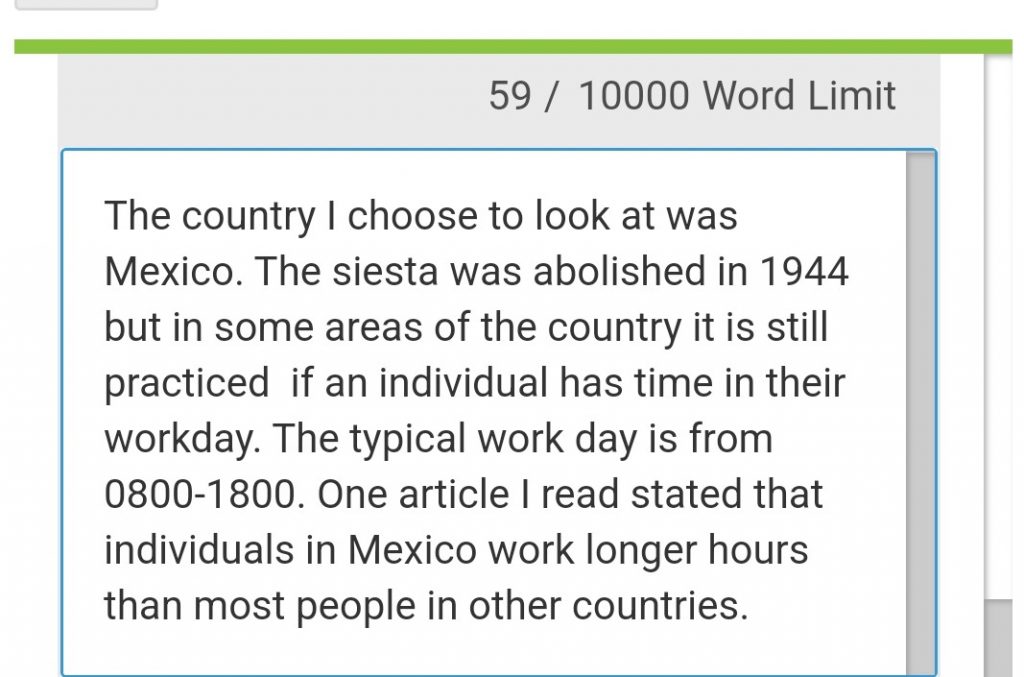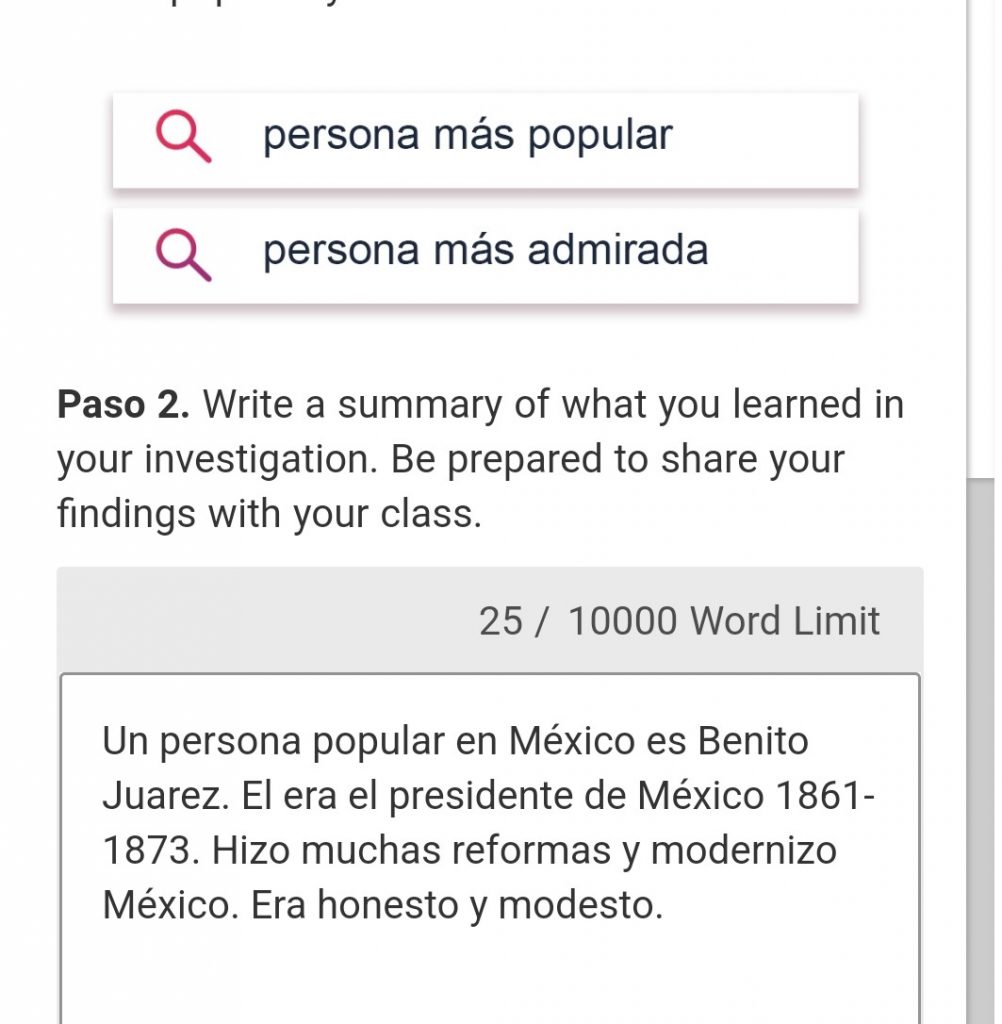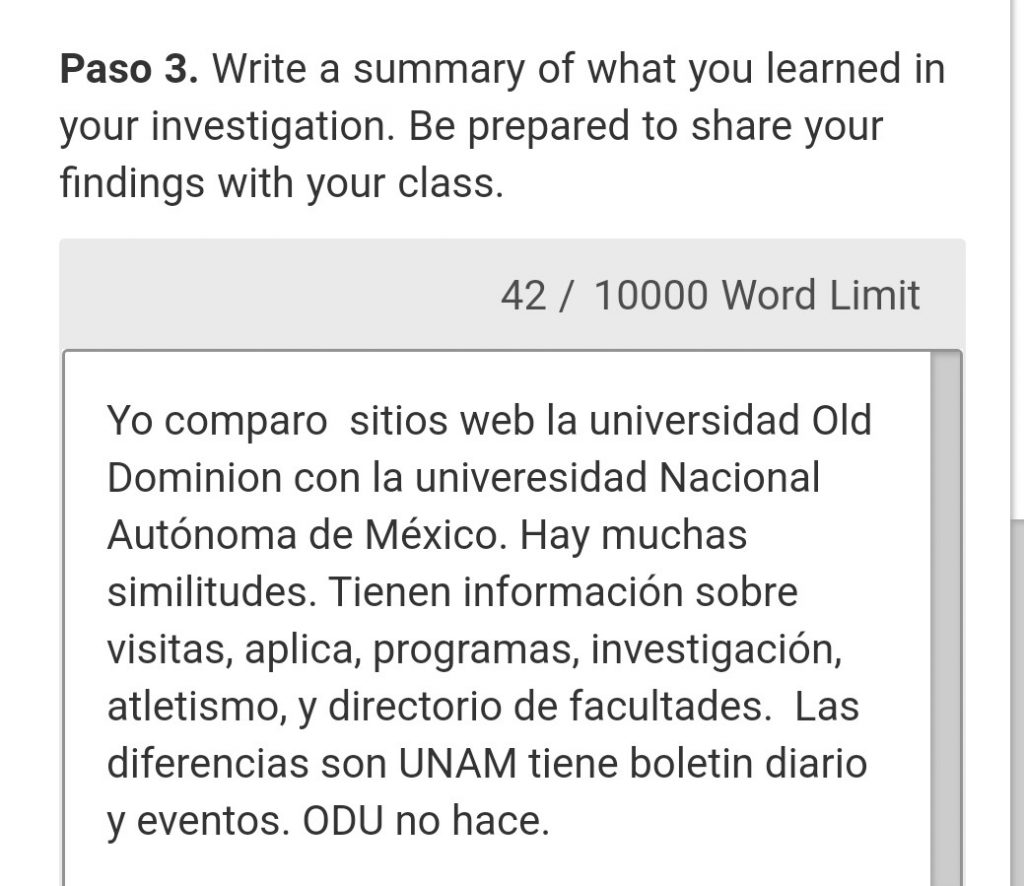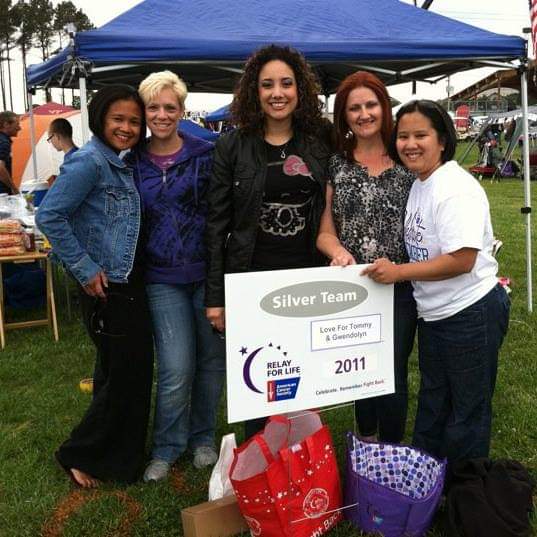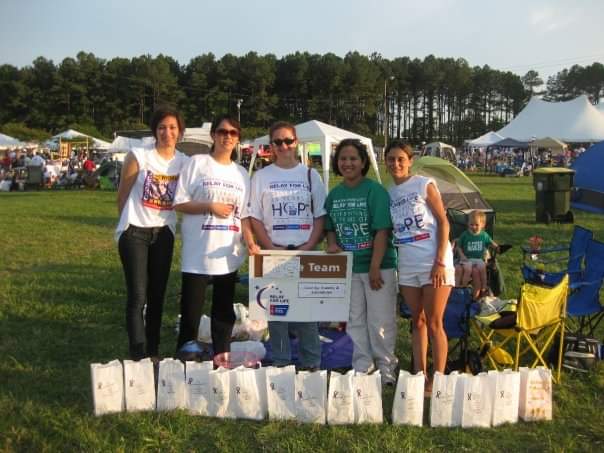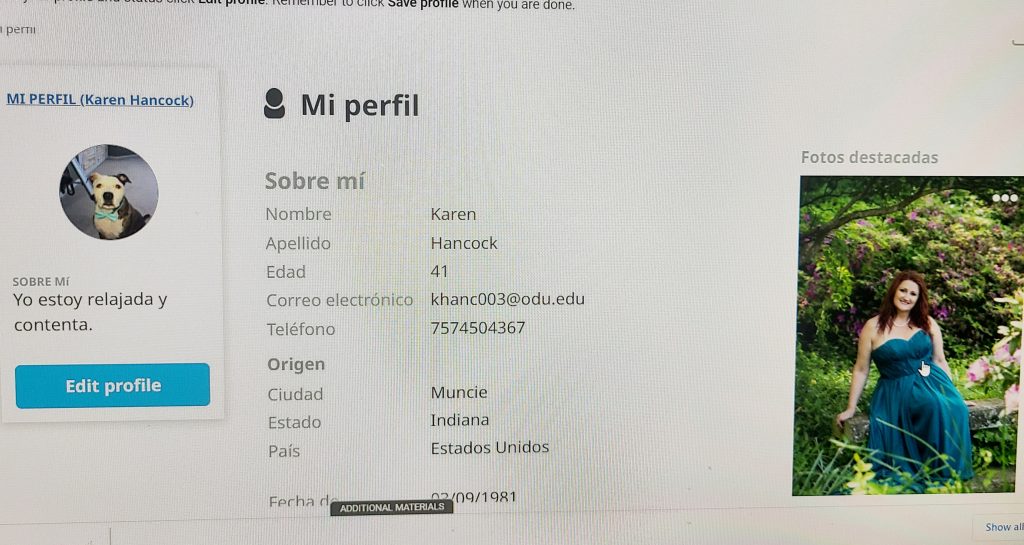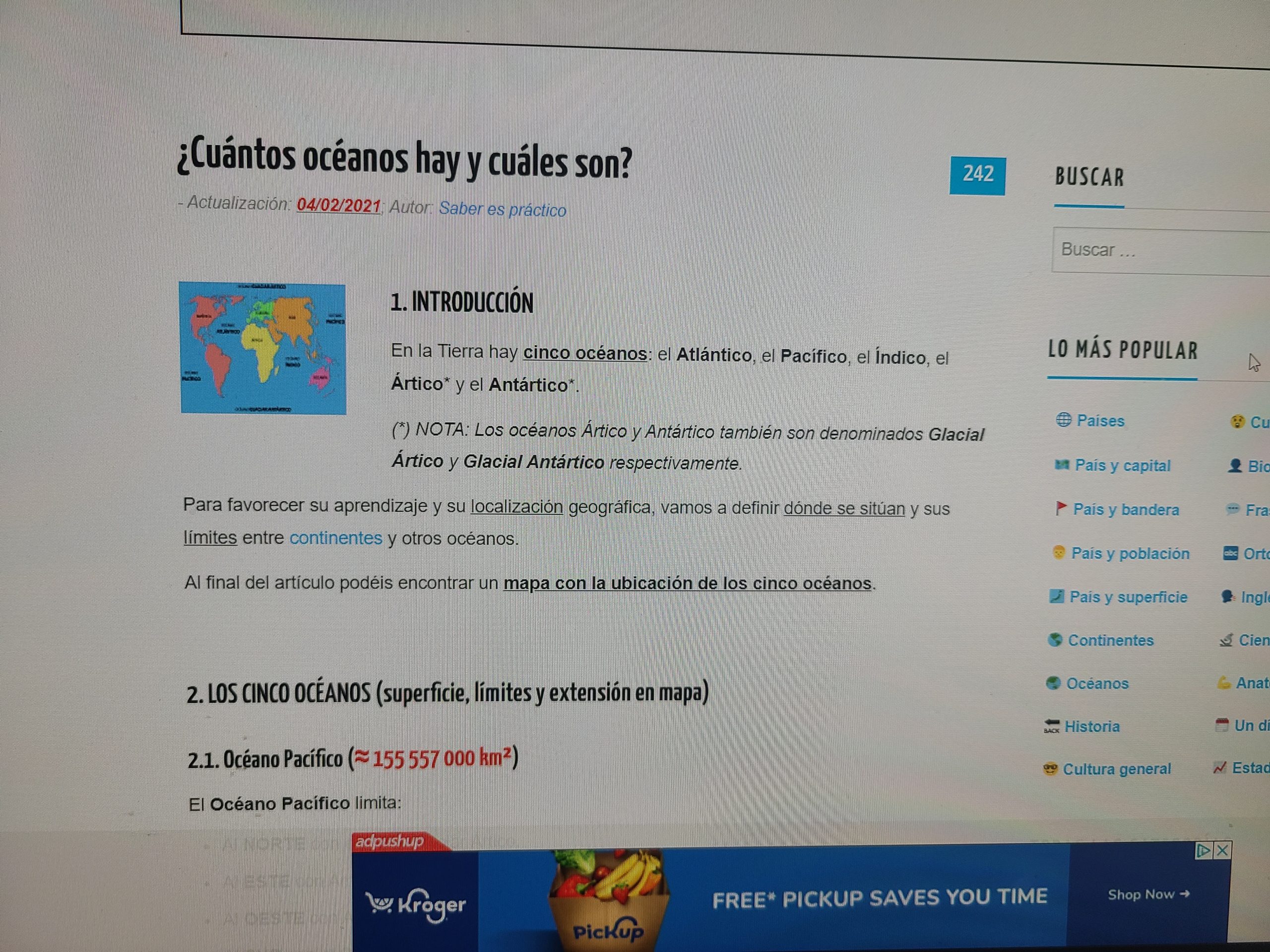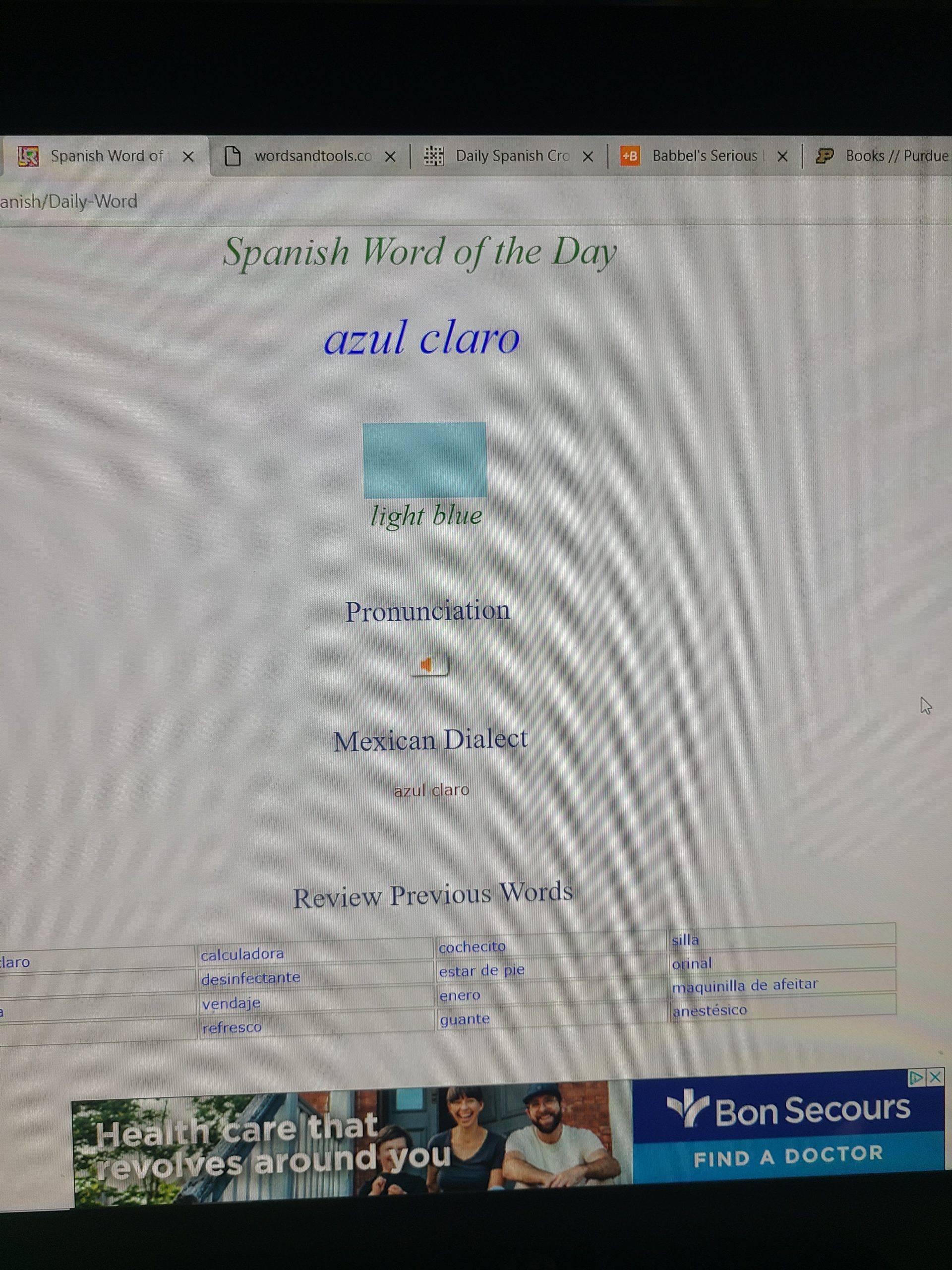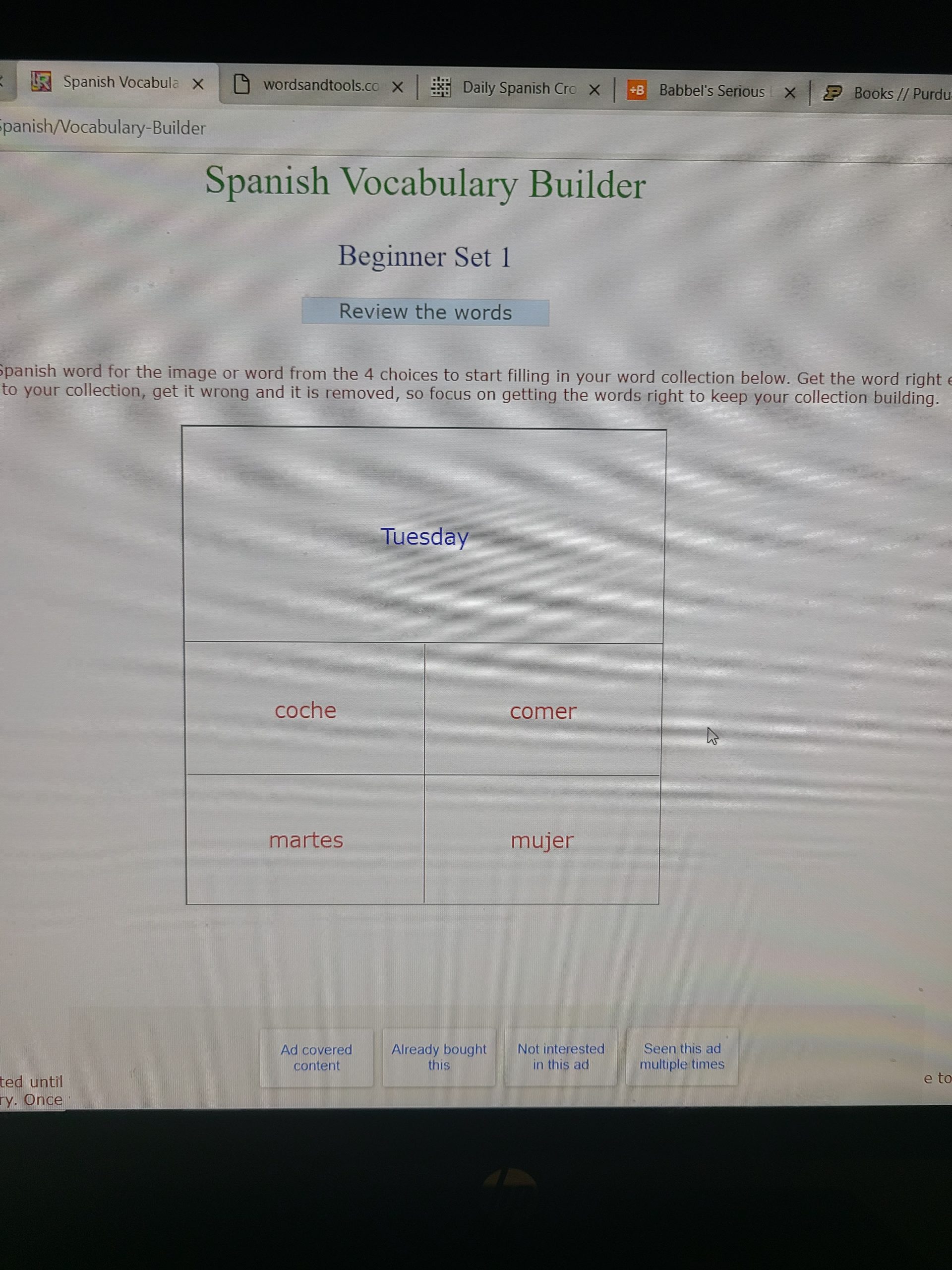SPAN 101
My Journey Through Introductory Spanish
Exploring Culture
We began the semester by exploring the use of social media in Spanish-speaking countries and doing internet searches in Spanish. Then we looked at degrees of formality when addressing others and the history of the siesta. We also explored university life in the Spanish-speaking world and what traits make someone popular and identified some famous individuals in Spanish-speaking countries.
Searching the internet in Spanish was interesting but also challenging, as many words and sentences I did not understand. However, there were some words I could pick out and get a basic understanding of what the sentence was talking about.
When learning about degrees of formality in Spanish-speaking countries, it seems that they are similar to English-speaking countries in that respect, in that it depends on the situation, and we have moved away from formalities in many situations. In module 3, we learned about the siesta, and I chose to explore the history of the siesta in Mexico and compared that information with the practice in Spain and the United States. I learned that in Mexico, the siesta was officially abolished in 1944 and that recent studies suggest that Mexican people work longer hours than most people in other countries. In the U.S., we don’t have a designated nap time; although some people nap regularly and others don’t, but it’s not a tradition. Whereas in Spain, I learned that businesses typically close in the afternoon for a few hours, so people can indeed have a siesta and then resume work afterward for a few more hours. The siesta is an important part of life in Spain. In module 4, we moved on to university life in Spanish-speaking countries. I learned that there are similarities between university life in Spanish-speaking and English-speaking countries. They have similar majors, play sports, and hang out at the student center as we do in English-speaking countries. I learned that there are not many dormitories in Spanish-speaking universities, unlike in the U.S., and many students live with family or in apartments off-campus. I also learned about the beautiful, historic University of Granada in Spain, founded by King Charles the fifth. And in module 5, we explored traits that make someone admirable, and we searched for individuals considered admirable in the Spanish-speaking world. I searched for famous individuals in Mexico and discovered who Benito Juarez was.
Engaging in Communities
I participated in the local annual Relay for Life for many years, an event sponsored by the American Cancer Society that raises funds for cancer research. This event honors those who have fought cancer and won the battle and memorializes those that lost their lives to the disease.
Engaging in your local community brings together people with common interests and helps people have a feeling of belonging. Being involved in the global community is essential because it addresses issues on a larger scale that affect more people in other areas, not just locally.
Interpersonal Communication
We engaged in various forms of interpersonal communication this semester as we began learning Spanish. All enhanced my learning from discussion boards to conversations with partners and profesora.
Through discussion boards posts, I was able to discuss an assigned topic with others in my class with the limited Spanish that I had learned up until that point. My favorite post was discussion board 3 when we learned about “12 meses,12 fiestas en España.” We then posted information about our favorite holiday. Also, I did practice sessions with my partner for our Proyecto assignments, which helped me understand and clarify what someone else was saying in Spanish. The audio portions of lingro learning assignments helped me learn how to pronounce letters and words properly. I also practiced Spanish with coworkers who are familiar with the language and one that is a native speaker. The most difficult part of these assignments was sentence formation and verb conjugation. I learned the vocabulary and identified it when spoken fairly easily, but I had a bit of difficulty when forming sentences. Each assignment helped me develop a larger vocabulary, and with practice, I have done better with verb conjugation, even though I still struggle with that.
Discussion Board 3
Los días, los meses y los años
En el video, mi gusta Cabalgata de los Reyes Magos Alcoy fiesta. Se celebra el 5 de enero. Esta fiesta celebra el día en que los tres reyes magos le dieron regalos Jesús. There is a parade with floats, and the three kings and candy is given out. In the United States, many Christians also celebrate this day, but it is called the Epiphany. However, Americans don’t typically have parades with floats and the three kings’ day. The way this day is celebrated in Spanish cultures is a great way to celebrate the Epiphany.
Mi celebración favorita es el 24 diciembre. Es el día navidad nochebuena. My family celebrates by going to Christmas eve services at our church, and our children open one present that evening. I like this holiday because I enjoy the celebration at our church and spending time with family.
Presentational Speaking
I engaged in various types of communication activities this semester through conversations with my partner and oral interviews with profesora and recording myself saying or doing various activities.
My first oral assignment in Spanish was reciting the alfabeto. Also, I engaged in conversations with my partner and oral interviews with profesora. I completed an activity where I discussed la universidad and recorded it. The most difficult of these types of assignments was the conversations/oral interviews. I had to practice a lot to prepare for them. The universidad assignment was easy and fun.
https://drive.google.com/file/d/1vKJR6aVz5oGFue6dMNbxOFbBtuzgsWUG/view?usp=sharing
Presentational Writing
The writing I did for Spanish class consisted mostly of assignments in lingro learning or on discussion posts. Through the lingro learning assignments, I slowly progressed in the area of verb conjugation. By module 5, the last module, I have improved at making sure the verbs/adjectives/subjects agree in a sentence. This has been a difficult concept for me, but I am progressing. But do need to study this more. I created my profile on lingro learning using the concepts and vocabulary I learned. For module 5, I wrote a nomination for the best person award for my good friend.
Proyecto 5
De nominación para el premio a la major persona
A quien corresponda:
Por la presente, quisiera nominar a mi amiga Michelle para el premio a la mejor persona. Yo conozco Michelle para muchos años. Ella conoce mi familia muy bien y es la madrina de mi hija. Ella es enfermera y tiene cuaranta años. Michelle trabaja en el hospital con bebès. Michelle tienes muchas cualidades positivas. Ella es bondadosa, cariñosa, inteligente y trabajadora. Ella es creativa y sabe caligrafía escribir. Ella sabe jugar el tennis y sabe comida cocinar buena. Michelle es una amiga talentosa, leal y fiel. Quedo a su disposicíon para preguntas.
Cordialmente,
Karen Hancock
Interpretive Listening
Many interpretive listening assignments were completed through lingro learning and conversations with my partner.
Many of the lingro learning assignments involved listening to words/sentences and identifying what was said. With my partner, we engaged in conversations based on the model for the particular unit we were working on. I also practiced with coworkers who speak Spanish and would try to identify what they were saying or ask for clarification if I had difficulty. I also started listening to music with Spanish lyrics and discovered that I like it a lot. I don’t understand much of the lyrics but can pick out some words that I do know. With each activity, my ability to understand Spanish has slowly increased. However, I still need sentences to be spoken slowly.
One of the songs by Enrique Iglesias that I recently heard and really liked!
Interpretive Reading
In-class reading consisted of reading the information in the modules and doing exercises such as looking information up in Spanish on a website.
The language learning center has a wealth of information on Spanish activities to do and readings. I did some activities in the Spanish area in the language learning center. I specifically did some of the vocabulary flashcards and words of the day and looked at the Spanish dictionary. There is so much information and many activities on that site, such as information about the countries and capitals in Spanish and links to Spanish newspapers and TV channels. I hope to do more exploring and activities on this website as I am sure it will help improve my skills and it’s very interesting.


